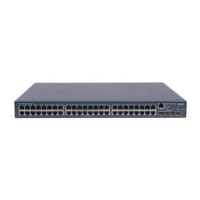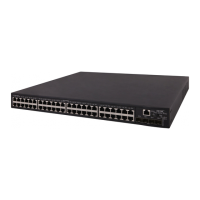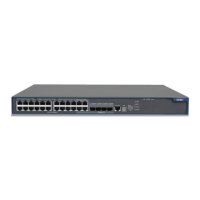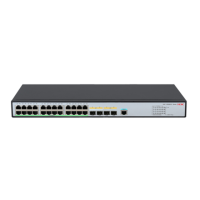1-2
Table 1-1 IP address classes and ranges
Class Address range Remarks
A
0.0.0.0 to
127.255.255.255
The IP address 0.0.0.0 is used by a host at bootstrap for
temporary communication. This address is never a valid
destination address.
Addresses starting with 127 are reserved for loopback test.
Packets destined to these addresses are processed locally
as input packets rather than sent to the link.
B
128.0.0.0 to
191.255.255.255
––
C
192.0.0.0 to
223.255.255.255
––
D
224.0.0.0 to
239.255.255.255
Multicast addresses.
E
240.0.0.0 to
255.255.255.255
Reserved for future use except for the broadcast address
255.255.255.255.
Special IP Addresses
The following IP addresses are for special use, and they cannot be used as host IP addresses:
z IP address with an all-zero net ID: Identifies a host on the local network. For example, IP address
0.0.0.16 indicates the host with a host ID of 16 on the local network.
z IP address with an all-zero host ID: Identifies a network.
z IP address with an all-one host ID: Identifies a directed broadcast address. For example, a packet
with the destination address of 192.168.1.255 will be broadcasted to all the hosts on the network
192.168.1.0.
Subnetting and Masking
Subnetting was developed to address the risk of IP address exhaustion resulting from fast expansion of
the Internet. The idea is to break a network down into smaller networks called subnets by using some
bits of the host ID to create a subnet ID. To identify the boundary between the host ID and the
combination of net ID and subnet ID, masking is used.
Each subnet mask comprises 32 bits related to the corresponding bits in an IP address. In a subnet
mask, the part containing consecutive ones identifies the combination of net ID and subnet ID whereas
the part containing consecutive zeros identifies the host ID.
Figure 1-2 shows how a Class B network is subnetted.
Figure 1-2 Subnet a Class B network

